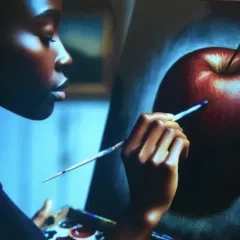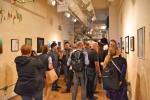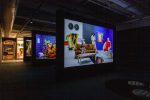[Andrea recommends two books taking a different look at the way art is categorized, displayed, and interacted with, and looks at a similar process currently in action at the Netherlands’ Van Abbemuseum. — the Artblog editors]
Reclassifying artists
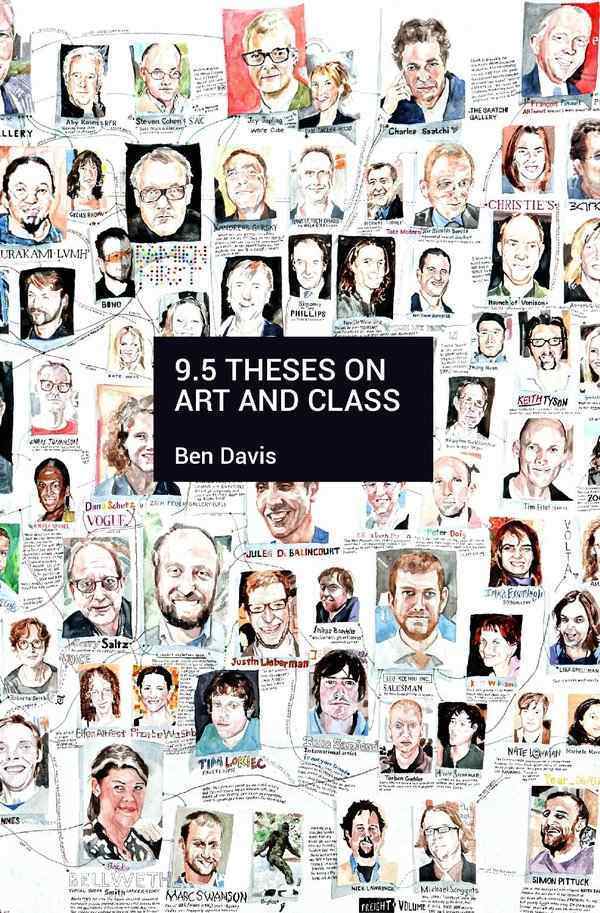
This collection of essays is a welcome, clear-eyed, and clearly expressed examination of contemporary art’s production and reception. Ben Davis is committed to and involved in politics that support social change, and skeptical of much of the current rhetoric around art and politics–such as the assumption that collectivism assumes a radical, political stance.
A seriously informed, progressive Marxist, Davis defines class according to workers’ autonomy, not their income level. This situates artists as middle-class, professional workers, at least in their work as artists, if not in their day jobs, which may well be working-class. Artists define what they do, and how they do it–except in the very rare situation of commissioned work, which Davis does not address.
Davis looks at art within the context of larger, social and political changes, and the effects of these changes upon art institutions (museums, art schools, galleries, art fairs, auctions), individual artists, and collectors. Given the times, this primarily involves identifying the impact of neo-liberal economic policy and its consequent social impact. He writes at the level of specific example, rather than theoretical generalization, which makes this collection a particularly good read. The book is also supported by the sort of factual research that is rarely seen in art criticism, as well as Davis’ refreshing disregard for the power and positions of the many other writers with whom he takes issue.
Rethinking how museums collect and display artwork
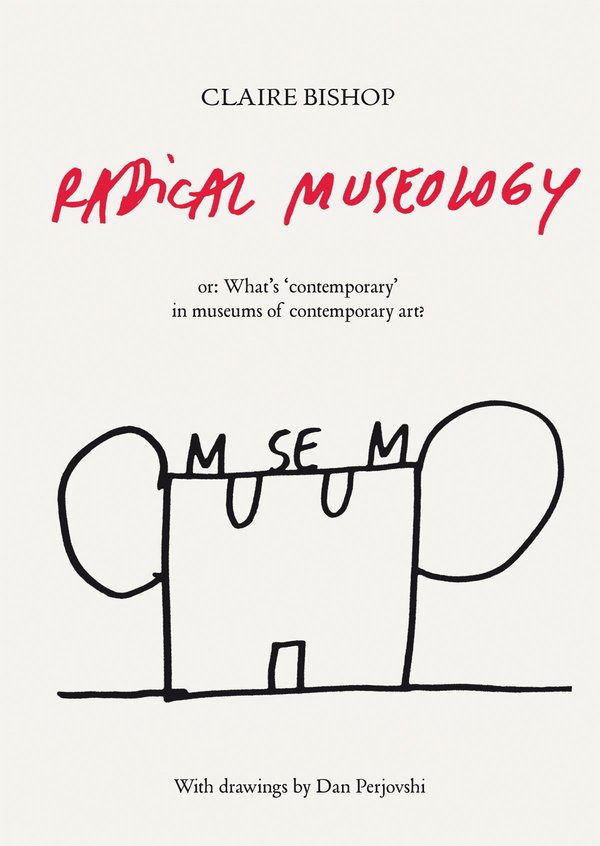
This attractively-designed, small book, illustrated with engaging sketches by Dan Perjovshi, uses case studies of the Van Abbemuseum in Eindhoven, Netherlands; the Museo Nacional Centro de Arte de Reina Sofia (the Reina Sophia) in Madrid, Spain; and the Muzej sodobne umetnosti Metelkova (MSUM) in Ljubljana , Slovenia, as exemplars of display paradigms that reflect a new approach to contemporaneity. Claire Bishop terms this approach “dialectical contemporaneity,” defined as both a dialectical method and a political project that involves questioning the museum itself, the category of art it exhibits and collects, and what she terms the “modalities of spectatorship” which this new approach produces.
The examples Bishop studies focus on one strand of museum criticism that questions the art-historical canon, totalizing historical narratives, and the presentation of art and its institutions as removed from political and economic concerns. These are questions that have been much-discussed over the past 20 years in the ever-increasing quantity of academic writing on museum studies; they reflect a more recent, burgeoning literature on exhibition history. Bishop’s three museum exemplars demonstrate sophisticated responses to these issues, and I am sorry not to have seen any of the carefully-conceived installations she describes. It is not clear, however, whether general museum audiences are receiving their messages–or how much these museums care. Their approaches are pitched at a high, intellectual level, most likely to be appreciated by viewers who are seriously involved with art, history, and cultural studies, and current with the literature.
As a former curator, I am also concerned that while Bishop acknowledges that her endorsed approach risks instrumentalizing the artwork, she does not seem to consider this a significant problem. I suspect she has never had to look an artist in the eye whose work has been exhibited to support a curator’s thesis. That approach is intended for Bishop’s ideal viewer, who is “no longer focused on the auratic contemplation of individual works, but one who is aware of being presented with arguments and positions to read or contest”–and it would be safer with dead artists.
Within the museum field, the most radical, current discussions concern who is making the decisions that determine what is exhibited and collected, as well as the stories they might tell. Whose values are reflected? This is a thoroughly political concern about whether wealthy trustees, bureaucrats in cultural agencies, grant-makers and professional staff, all with privileged, university educations, are the only ones who should decide what constitutes significant works of art and what sort of approach is appropriate for their display. In respect to these issues, the Van Abbe Museum, Reina Sophia, and MSUM are hardly radical, but conducting business very much as usual.
The Van Abbemuseum’s new approach
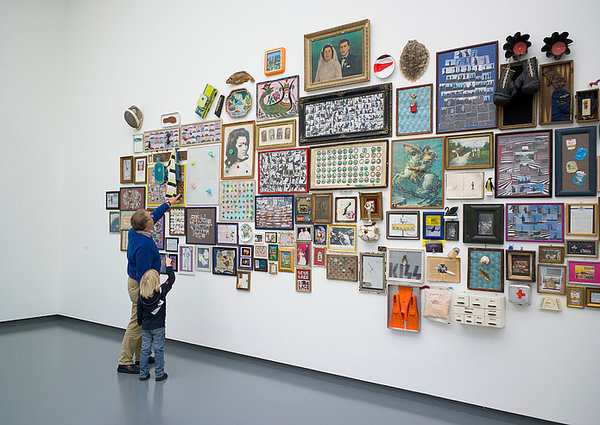
The day after I wrote the above remarks, in response to Bishop’s text, I heard Annie Fletcher, the Curator of Exhibitions at the Van Abbemuseum, give the keynote address at a day-long meeting of the Visual Arts Workers Forum, held at Project Arts Centre, Dublin. Fletcher, who is Irish, has worked since its inception on the experimental Be(com)ing project that Bishop discusses, and she gave a considerably different picture of it.

The Van Abbemuseum has long been noted for its adventurous programming, but the multi-year, experimental Be(com)ing was in part a creative response to draconian cuts in appropriations from the Dutch government, anticipated to total more than 40% over a five-year period. The museum could not continue with business as usual. Once Upon a Time…The Collection Now, an exhibition of the collection with changing components, not only took a critical look at the history of the collections, but invited the visitors to curate their own selection, using the archives, and to propose which parts of the collection should be taken out of storage and put on view.
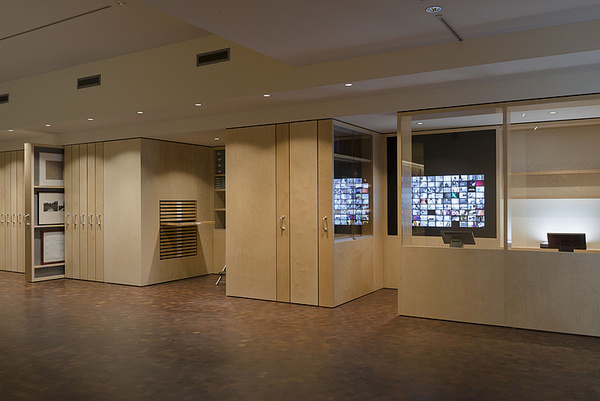
The museum also turned to people beyond its own staff for suggestions about filling gaps in the collection; Fletcher mentioned the example of an exhibiting artist. In an attempt to look at art beyond its traditional Euro-American purview, the museum invited arts professionals from across the Middle East for discussions, and responded to their concerns. One result was the loan of a Picasso painting in the Van Abbemuseum’s collection to Ramallah. This loan turned out to be a three-year project, and the museum is actively involved with a newly-formed, museum consortium, l’internationale , to continue its dialogue with other parts of the world. Nor were contemporary works of art arranged largely with specific, didactic intent that Bishop suggested.
I am sure that no one at the Van Abbemuseum would suggest that these investigations offer definitive solutions to the issues that its very self-critical staff, and others, have raised about the museum’s historically de-contextualized, Eurocentric, middle-class, or patriarchal view of art. But they offer a remarkable attempt at change that has already become a model for others.


